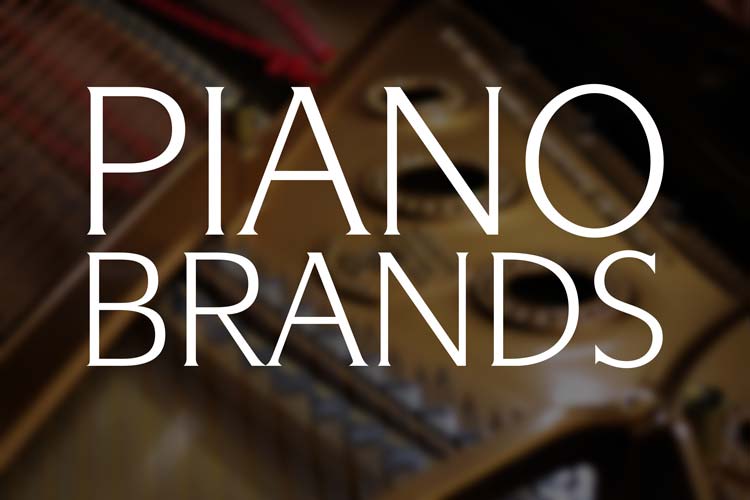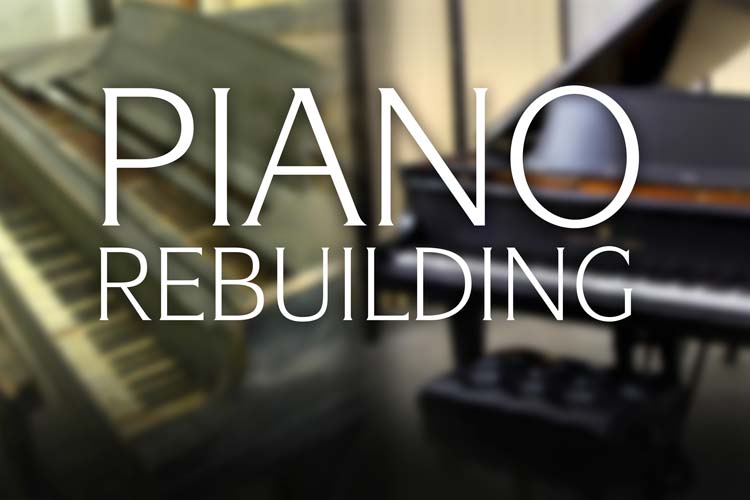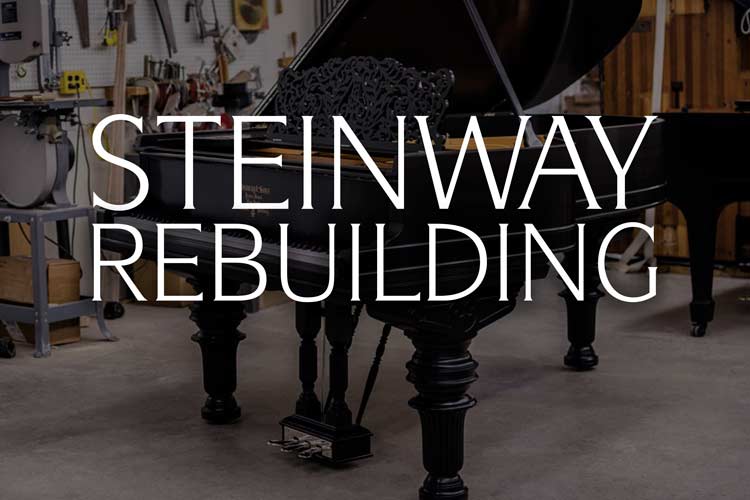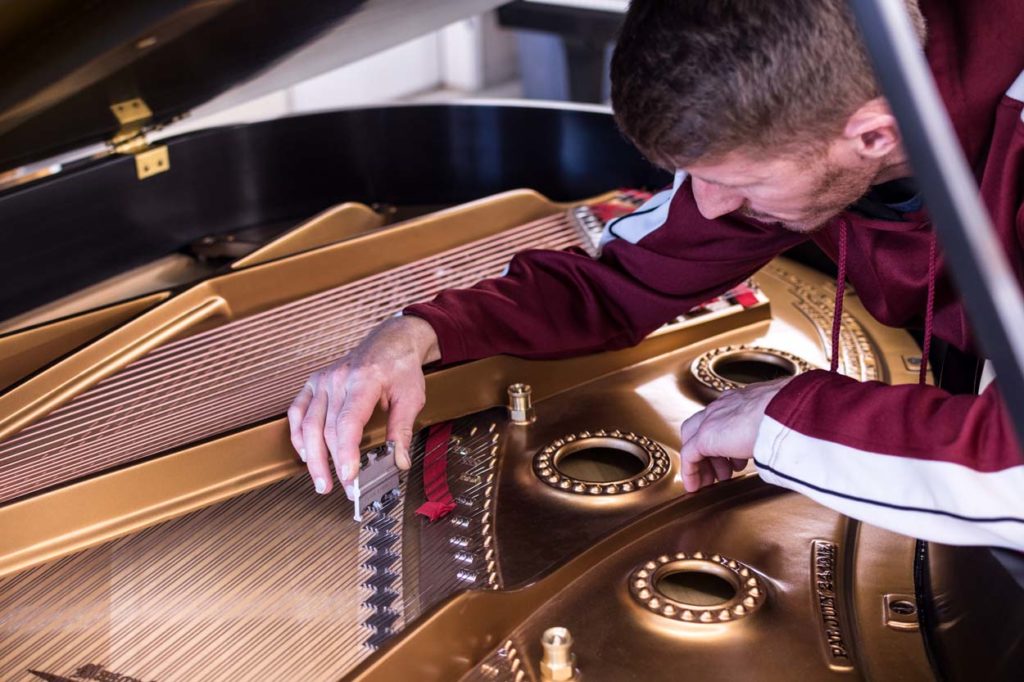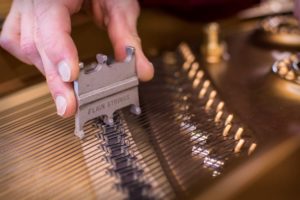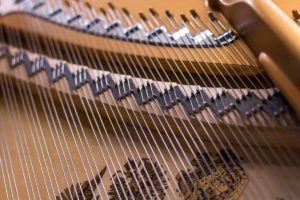The Art and Science of Down Bearing
What exactly is the down bearing on a piano?
Down bearing is the pressure exerted downward by the piano strings across the soundboard bridge. This pressure allows the bridge to efficiently transfer the energy from the vibrating strings to the soundboard. The soundboard then amplifies these vibrations, greatly increasing the loudness.
Piano strings are stretched tautly between tuning pins that are driven into the pinblock at the front of the piano and the hitch pins located at the rear of the piano’s cast-iron plate. Between these two termination points, the strings rest over a bridge, as they do on a violin. The distance between the agraffe (or capo bar) and the bridge is the ‘speaking length’ of the string.
For the down bearing to be correct, the bridge must be higher than the two termination points and it must be set at just the right height. Just as too little bearing will result in a poor tone, an excessive bearing will kill the amplification power of the soundboard.
“When we’re rebuilding or restoring a piano, this is crucial. If you have too much down bearing it keeps the soundboard from vibrating, and this will kill or muffle the sound. It will deaden it.” – Dennis Chupp
As the tension of the strings increases, it places additional pressure on the bridge. If the bridge is higher when compared to the end points you will have more down bearing. If it’s lower, you will have less. Too much or not enough is a critical measure to make because the sound of the piano is greatly affected by these precise measurements and adjustments.
Importance of Proper Down Bearing
Proper down bearing is an incredibly important part of restoring (or manufacturing) a grand or upright piano. The force on the wire going across the bridge must be balanced perfectly. Achieving that proper balance is complicated and depends not only on the size of the piano but on the skillful measurements of the technicians working on the restoration.
When the piano’s down bearing is excessive it not only affects the sound of the piano, but it may cause the bridge to “roll” which can cause the soundboard to develop an indented curve. Eventually, the glue holding the bridge’s laminations might fail and the bridge may even crack around the bridge pins.
The Side Bearing
In addition to downbearing, piano strings also have side bearing. An approximately seven-degree deflection creates side bearing (pressure exerted sideways on the bridge pins.) Unlike the down bearing, this is standard for all pianos. Different size pianos will need more or less down bearing, but the side bearing will always be the same. Side bearing helps form a strong connection between the strings, pins and bridge so the maximum amount of energy can be transferred from the bridge to the soundboard.
Putting Theory Into Practice
Numerous individual components work together to affect the bearing in a piano. The piano’s pinblock is fit to the flange, under the plate. The thickness of the pinblock will raise or lower the plate, and this significantly affects the angle of the strings in relation to the bridge. The cast iron plate/harp must be supported evenly around its entire perimeter. This ensures the proper bearing and prevents the plate from being unduly stressed, twisted, or bent.
A lot of more inexperienced piano rebuilders make a grave mistake of not taking the time to make sure the pinblock and plate height is measured correctly. Since there is such tremendous pressure coursing through the taut piano wires, we have actually seen broken cast iron plates. (This is often not repairable and when it is possible, it can be time-consuming and costly.)
When the over 200 strings inside of a piano are pulled up to pitch, there are thousands of pounds of tension and pressure pushing down on the bridge and soundboard. All of these piano strings exert pressure both down and to the side of the bridge. This is why it is essential that the piano is properly manufactured or rebuilt. When the restoration of any piano is completed correctly, it can handle a large amount of pressure and transform it into the rich, vibrant tone expected of a vintage restored piano. Ensuring the correct bearing is just one of the steps we take when fully restoring a piano.
Chupp’s Piano Service | Restored Steinway Pianos | Vintage Mason & Hamlin | Expert Piano Rebuilding


